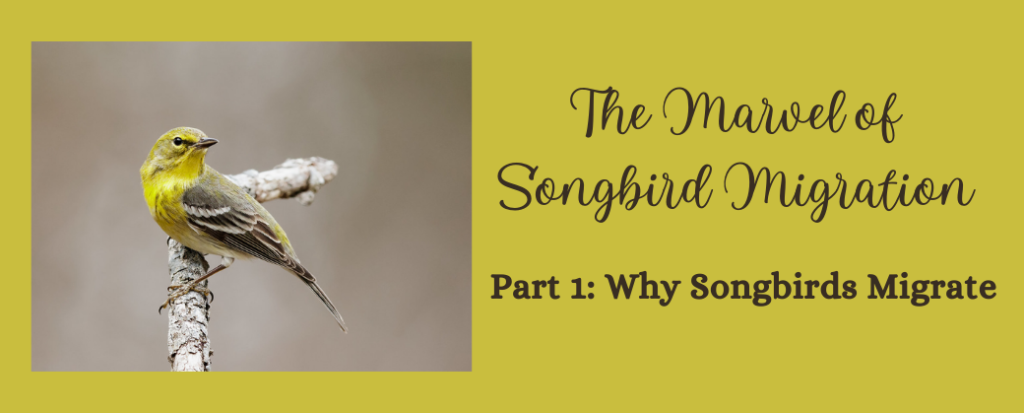
By Judy Ferris, Master Naturalist and Guest Blogger
Though it may be cold and windy outside as you read this, rest assured that a springtime surge of songbirds has already started moving northward. Most of our North American songbirds (warblers, sparrows, orioles, tanagers, and thrushes) head south for the winter.
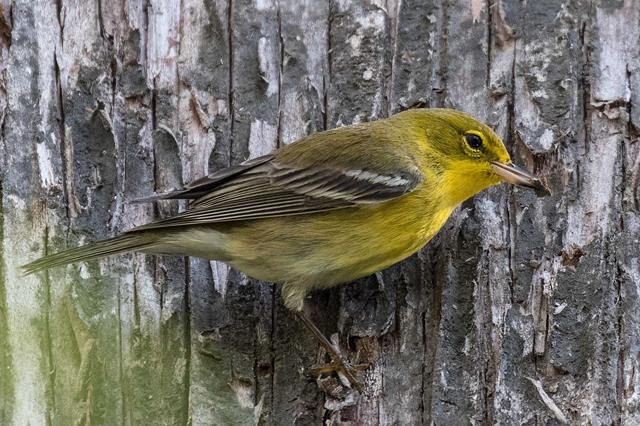
Pine Warbler – This small but hardy species is one of our first songbirds to arrive in spring to breed and nest. They have already arrived this spring at their territories in southern Maryland. You may hear their warbling trills as they stake out their territories in areas of mature pines. Click on the link below to listen to the Pine Warbler’s melodic warble.
Why would tiny songbirds, most of whom weigh less than an ounce, undertake such a perilous migration each year? It’s all about insects. The timing of bird migration is tied to the springtime emergence of insect abundance which we experience here in North America.
Some species spend the winter only as far south as the southern U.S. Many species, however, are long-distance migrants; traveling to and from the Caribbean, Central America, and even South America. The average distance traveled by birds migrating from South America is about 1500 miles. Their journey may involve hop-scotching across the Caribbean to Florida or include a perilous 500-mile non-stop crossing of the Gulf of Mexico.
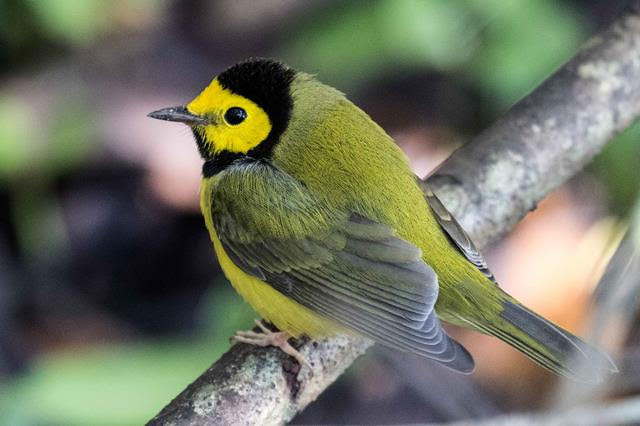
Hooded Warbler – Winters in the Caribbean and southern Central America. Crosses the Gulf of Mexico to reach the U. S.. Breeds in the eastern U.S. At ACLT, these warblers are often tucked out of sight in foliage. If you listen, however, you may hear their ringing song.
https://www.allaboutbirds.org/
Consider the following:
- Pound for pound, insects contain 4 times as much protein as beef.
- Insect organs are rich in fat – a far better energy source than carbohydrates.
- Insects are the ideal fuel for migrating songbirds.
- Insects are the baby food of choice for 96% of our songbirds.
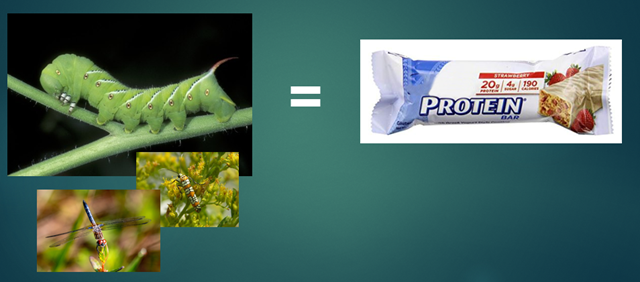
Avian migration evolved about 15,000 years ago at the end of the last Ice Age. Many of our migratory warblers, sparrows, tanagers, and orioles evolved from tropical ancestors and have close cousins who live year round in the Caribbean, Central America, and even South America. The tropics have a high density of birds, so competition for nesting sites and food is intense. From an evolutionary standpoint, it was only a matter of time before independent-minded tropical birds broke with tradition and flew to the Florida or the Gulf Coast and beyond. What did they find? A cornucopia of insects and less competition for food and territory! While most tropical birds raise 2 or 3 chicks at a time, migratory birds who head north find enough insects to rear 5 or 6 chicks! The only drawback is that it gets cold in the north in the winter. So an autumn return trip to the tropics is a necessity. Migration is a risky undertaking and some birds are lost each year. In the end, however, both the tropical stay-at-home birds and the migratory birds successfully rear about the same number of offspring.
Our migratory songbirds evolved along with the plants, insects, and other wildlife that populated a North America unmarred by human activity. When these birds flew north from the tropics and reached our shores, they were greeted by pristine beaches and an endless green carpet of forests, grasslands, and wetlands which stretched from Florida to the boreal forests of northern Canada. For a hungry bird, this was a non-stop insect buffet. Stopovers for feeding, drinking, and resting were literally everywhere.
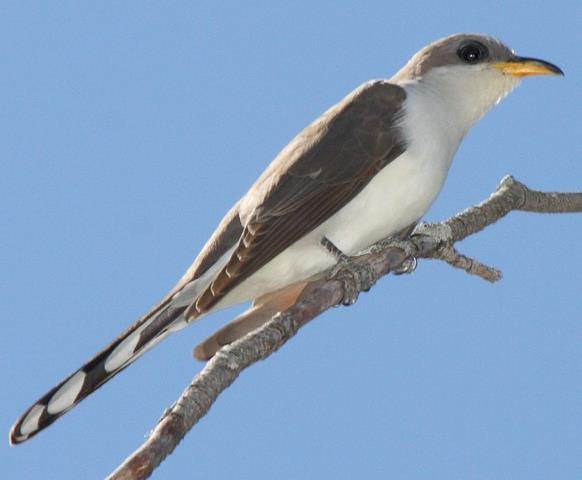
Yellow-billed Cuckoo. Winters in South America. Breeds throughout the eastern U.S. These birds are relatively common at ACLT, but are slow-moving and tough to spot. Your best bet is to listen for them as you walk the trails. Cuckoos make a variety of strange calls which you may have heard, but not known what it was. Click on the link to hear their variety of unusual sounds. Photo by Dominic Sherony CC 2.0.
https://www.allaboutbirds.org/
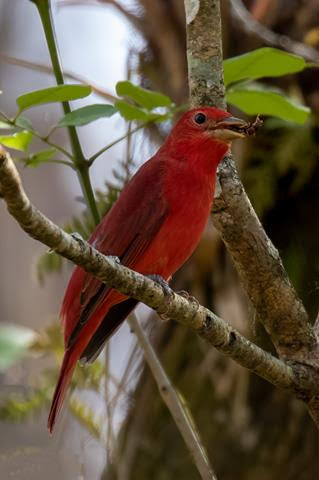
Summer Tanager – Winters in Central and South America. Breeds in the southern U.S. As you hike in mature forests, you may hear this bird singing in the tallest treetops. Click on the link to listen.
Birds today face a very different journey than that of their ancestors. Those previously pristine beaches are now lined with forests of tall condos. Vast tracts of woodlands have been eliminated. Replaced with shopping malls, subdivisions, and farmland. The wild places that remain are becoming so fragmented that they can no longer support wildlife – including insects.
Thus places like ACLT are increasingly precious. For birds who are just pausing in their journey, ACLT is a welcome rest stop. Like us humans, birds appreciate a good layover spot and will return year after year. Many migratory birds stay to breed and raise young at ACLT. This special place hosts a variety of breeding birds including indicator species such as Louisiana Waterthrush, Worm-eating Warbler, Scarlet Tanager, Kentucky Warbler, Wood Thrush, American Redstart, Prothonotary Warbler, and many others.
Other Resources
Calvert County is blessed with numerous areas to hike and explore. As you are out and about welcoming the arrival of spring, take time to pause, look, and listen. You may hear or see a bird that you never noticed before. If you take your binoculars with you, you may even have the privilege of observing these beautiful feathered creatures up close and personal. Be sure to check out the Calvert County Birding Trail link below to find additional areas to visit. Have fun and happy birding!
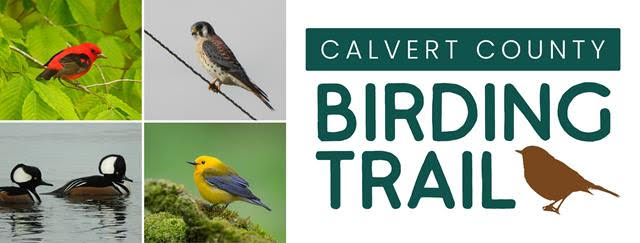
Calvert County Birding Trail – https://choosecalvert.com/